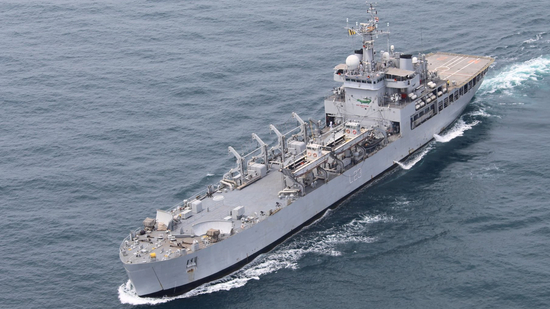In a major milestone towards India’s defense readiness, the Indian Navy successfully conducted the test-firing of a Medium-Range Surface-to-Air Missile (MRSAM) in the Arabian Sea. The test not only enhances the nation’s maritime security ecosystem but also enforces India’s self-reliance in defense capabilities.
Boosting India’s Naval Arsenal
The successful firing of the MRSAM underscores the Navy’s increased combat capability to counter emerging aerial threats. Part of a sequence of ongoing efforts aimed at upgrading naval defense systems, this test confirms both the performance and operational adoption of the missile system on Indian warships.
The missile was fired from an Indian warship and successfully hit its target, demonstrating precision tracking and high-speed interception capabilities. The operation validated the readiness of the system to counter hostile airborne threats like enemy aircraft, helicopters, drones, and incoming missiles.
What Makes MRSAM Stand Out?
MRSAM is an advanced air defense weapon system for rapid reaction and high mobility. It has an over 70-kilometer operational range and can destroy several airborne targets in a single shot in all weather conditions. It possesses the capability to launch vertically and provide 360-degree coverage, rendering it extremely suitable for its application on naval platforms operating in high-threat environments.
Equipped with modern radar and command systems, the missile can track multiple targets with high accuracy and adjust its trajectory in real-time to neutralize fast-moving threats. The technology used in the system includes active radar homing guidance and thrust vector control, enhancing its effectiveness in battlefield conditions.
Indigenous Defense Capabilities on Display
The test is a glaring indication of India’s push for indigenization of its defence technology. Even though global cooperation has gone into the development of the missile, local production of key components and assembly reflect India’s thrust towards strategic autonomy as part of the ‘Aatmanirbhar Bharat’ (Self-Reliant India) movement.
India’s defence industry, spearheaded by agencies and establishments such as the Defence Research and Development Organisation (DRDO) and Bharat Dynamics Limited (BDL), has been tending to reduce external dependence by manufacturing high-quality weapon systems indigenously. The success in the MRSAM test is a testament to this policy and capability change.
Tactical and Strategic Implications
For the Indian Navy, placing the MRSAM on front-line warships substantially enhances operational potential in areas of strategic interest. The Arabian Sea, as a critical maritime passage, is usually under surveillance by adversary forces and likely to face threats from the air and sea. Advanced air defense systems such as MRSAM allow the Navy to assertively defend Indian territorial waters and react effectively to provocations.
The test of such a system also serves as a strategic message to rivals regarding India’s preparedness and technological capability. In regional geopolitics, the capability to intercept and neutralize threats prior to their penetration of defensive perimeters is essential. With this test, India has reaffirmed its emphasis on proactive defense strategy.
Road Ahead
After the successful trial, the Indian Navy intends to deploy the MRSAM system on various classes of warships such as frigates, destroyers, and aircraft carriers. Standardizing this technology on the entire fleet will mean all major naval platforms are armed with a common and highly capable defense system.
Upgrades are also in the pipeline as the Navy collaborates with research and development institutions to develop the next generation of missile systems. The emphasis continues to be on improving accuracy, increasing range, and incorporating artificial intelligence and machine learning for intelligent threat detection and response.
Conclusion
The successful trial by the Indian Navy of the Medium-Range Surface-to-Air Missile in the Arabian Sea testifies to the nation’s increasing military strength and technological advancements. It not only deepens naval security but also indicates a move towards increased defense indigenousness. With threats becoming more complex and varied in nature, India’s proactive investment in cutting-edge weaponry and domestic capabilities ensures it stands ready to protect national interests on land, air, and sea.






